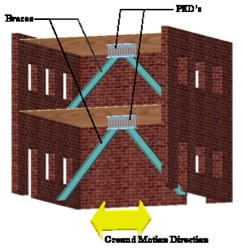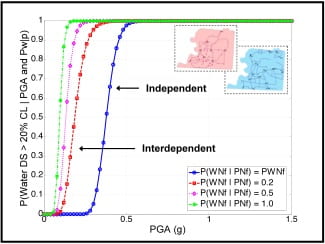Current Projects
Integration of Hands-on Learning Projects in AE, ME Curriculum

Engineering modeling and analysis is usually presented in classroom lectures while verification of important results is carried out in separate lab courses. Our approach is to bring certain key experiments directly into the classroom while also creating less structured experiments or projects that can be carried out outside the classroom. These are called “hands-on learning” projects and are being developed by a team of AE and ME faculty and students. The projects are designed to be carried out on a desktop or table using a simple and inexpensive apparatus along with custom designed and fabricated modular instrumentation and a laptop-based data acquisition system using MATLAB. Some of the experiments include:
- Bending of thin beams of different materials;
- Bending of heterogeneous bi-material beams;
- Bending of beams with unsymmetrical cross sections;
- Shear center in thin-walled section beams (3D-printed and extruded metal);
- Structural dynamics of simple 2-DOF systems.
Simple, inexpensive sensors are used with custom-designed modular instrumentation. Typical sensors include electrical resistance strain gauges, MEMS inertial multi-axis accelerometers, and magnetic vibration sensors. Data is acquired using a LabJack T7-Pro or NI myDAQ USB connected devices under control of a MATLAB script. MATLAB-based image analysis using a basic webcam is employed to measure quasi-static 2D beam tip displacements.
Selected Previous Projects
Active Control of Flexible Rockets

Feedback control systems are critical to maintaining the attitude of a rocket, but such control systems traditionally consider that the rocket is a rigid body. New launch vehicle designs, such as the Ares I with a slender first stage consisting of a single, extended Shuttle solid fuel booster and an upper liquid fueled upper stages, cannot be treated as rigid bodies because the fundamental bending modes are very close to the attitude controller bandwidth. Traditional designs using notch filtering to reject such modes may not provide acceptable robustness. Our approach is to design an adaptive controller that utilizes a model reference based neural network scheme to provide the required robustness without sacrificing performance. The neural network is self-training and compensates for differences between the assumed vehicle model and the actual dynamics.
Seismic Fragility of Nonstructural Building Systems

Failure of nonstructural subsystems may constitute the majority of damage from moderate to severe earthquakes. However, due to the wide variety of nonstructural subsystems and the broad range of designs for individual subsystems, it is very hard to estimate the seismic fragility of installed components. Our research focused on developing methods for rapid seismic fragility estimation for electrical subsystems in buildings. The work was initiated with NSF funding through the Mid-America Earthquake Center.
Seismic Response Across Regions
Our research developed a method to rapidly assess the fragility of structures and geostructures over a specified region. The earthquake response of a structure is affected by the uncertainty in not only the earthquake but also the uncertainty in the characteristics of the structure itself. For an individual structure or geostructure, the uncertainty arises largely from material properties and construction methods, but for a regional collection of structures whose individual characteristics are not known, additional uncertainty arises from macro-level parameters such as structural type, base planform, orientation, as well as vertical and planform irregularities, and the applicable design codes.
 Since detailed analysis of each structure or geostructure in the collection is impractical, this research addressed the problem by developing a methodology based on the use of computationally efficient metamodels to represent the overall structural behavior of the collection. In particular, response surface metamodels were developed using a Design of Experiments approach to select the most influential parameters. Monte Carlo simulation was carried out using probability distributions for the parameters that are characteristic of the target collection of structures or geostructures, and the fragility of the collection was estimated from the computed responses.
Since detailed analysis of each structure or geostructure in the collection is impractical, this research addressed the problem by developing a methodology based on the use of computationally efficient metamodels to represent the overall structural behavior of the collection. In particular, response surface metamodels were developed using a Design of Experiments approach to select the most influential parameters. Monte Carlo simulation was carried out using probability distributions for the parameters that are characteristic of the target collection of structures or geostructures, and the fragility of the collection was estimated from the computed responses.
The basic methodology was applied to several applications that are relevant to structures in Mid America. These included a single building (an unreinforced masonry firehouse typical of an essential facility) as a reference case, and the effect of seismic rehabilitation on the computed fragility was also investigated. The method was next applied to a class of lowrise steel moment frame structures using a 2D structural model only, and the fragilities of a collection of such structures was estimated. This was followed by an extension involving the use of 3D structural models for a class of lowrise L-shaped steel moment frame structures. Finally, the methodology was applied to two important classes of geostructures that are common to Mid America: (1) earthen and rockfill dams, and (2) levees.
The proposed methodology is suitable for incorporation into advanced GIS-based risk assessment and management software systems for practical applications.
- Craig, J.I., B. Goodno, D. Frost, P. Towashiraporn, G. Chawla, J-W. Seo, L. Duenas-Osorio, “Rapid Assessment of Fragilities for Collections of Buildings and Geostructures,” NSF Mid America Earthquake Center, Univ. of Illinois at Urbana-Champaign, Report CD 07-17, September 2007.
Interdependent Response of Networked Systems

Networked systems such as electric power, telecommunications, gas and water systems can often be quite vulnerable by themselves to earthquakes or other severe natural disturbances. A more subtle vulnerability can arise because of the interdependence between these networked systems. For example, earthquakes or extreme flooding can damage the electric power sources for cell phone towers whether they are from utilities or local generators. Also, many utility networks such as electricity, gas or water are controlled by distributed systems that rely on telecommunications. Our research, carried out through the Mid-America Earthquake Center, has examined and characterized this interdependency so that future research can mitigate the increased vulnerability created by the interdependence.
Ductile Cladding for Passive Seismic Reduction in Buildings
Analytical and experimental studies led by Prof. Barry Goodno and me since the late 1980’s have shown that promising levels of seismic response attenuation can be designed into new and existing building structures through use of “advanced” connections for precast cladding systems. Such connectors must be designed not only to attach the cladding panel to the building structure but the can also be designed to provide ductility and energy dissipation by permitting relative displacements between the structure and the cladding panels. A special test fixture was designed by doctoral student J-P. Pinelli who used it to test a family of flexural connectors he developed. Other students designed and tested connectors that used ductile torsional deformation and connectors using composite laminated neoprene and steel isolation pads enclosed within steel flexures for bearing applications.

Nonlinear analytical models developed for the various connector designs were incorporated into existing nonlinear software for time history dynamic analysis of planar structural systems. Optimization of the connector properties for an actual 20 story building application resulted in controlled energy dissipation in the cladding connectors, and reduced demands on the supporting structural framework. Results for this building showed that either up to 41% reduction in peak displacement response could be achieved from the baseline (as-built) configuration by retrofitting advanced cladding connectors, or else as much as a 17% reduction in structural weight (in the longitudinal direction) could be achieved for the same baseline response level. This suggests that use of an energy dissipating cladding system could lead to either improved serviceability (reduced drift) or else a savings in structural steel, or some combination of both.
- Goodno, Barry J., Craig, James I., Towashiraporn, P., and Dogan, T. (1998) “Ductile Cladding Connection Systems for Seismic Design,” Report NIST GCR 98-758, US Dept. of Commerce, National Institute of Standards and Technology (NIST), Building & Fire Research Laboratory.
- Pinelli, J. P., C. Moor, J. I. Craig, and B. J. Goodno. (1996), “Testing of Energy Dissipating Cladding Connections,” Earthquake Engineering and Structural Dynamics, Vol. 25, pp. 129-147.
- Pinelli, J. P. (1992), “Development of Energy Dissipating Cladding Connections for Passive Control of Building Seismic Response.” Ph.D. dissertation, School of Civil Engineering, Georgia Institute of Technology, Atlanta, Georgia, November.

